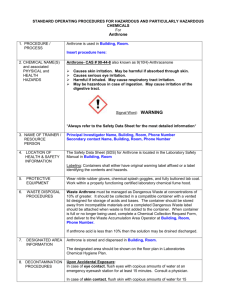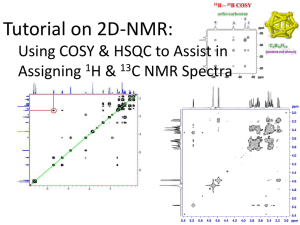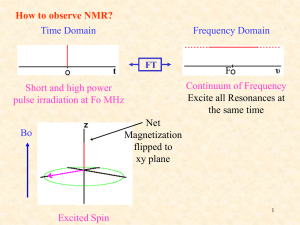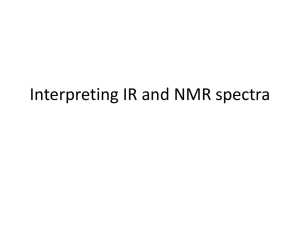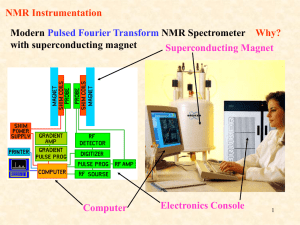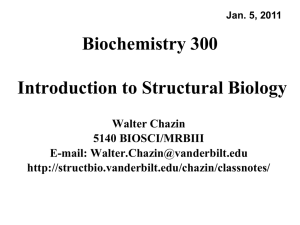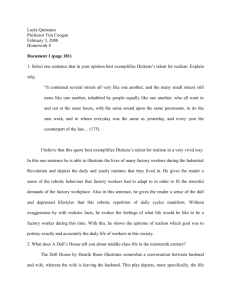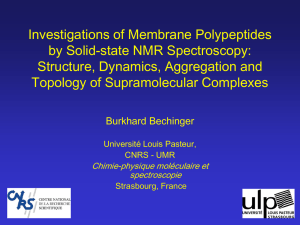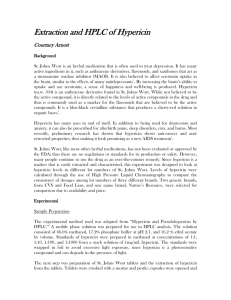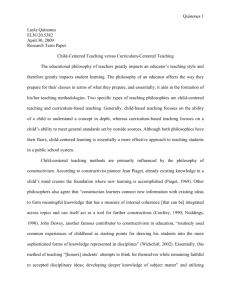Here is the Original File - University of New Hampshire
advertisement
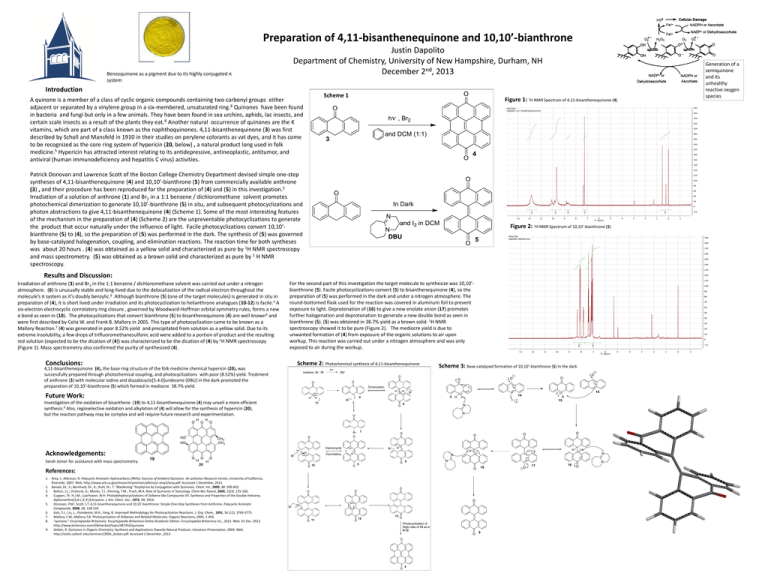
Preparation of 4,11-bisanthenequinone and 10,10’-bianthrone Benzoquinone as a pigment due to its highly conjugated π system Justin Dapolito Department of Chemistry, University of New Hampshire, Durham, NH December 2nd, 2013 Introduction A quinone is a member of a class of cyclic organic compounds containing two carbonyl groups either adjacent or separated by a vinylene group in a six-membered, unsaturated ring.8 Quinones have been found in bacteria and fungi but only in a few animals. They have been found in sea urchins, aphids, lac insects, and certain scale insects as a result of the plants they eat.8 Another natural occurrence of quinones are the K vitamins, which are part of a class known as the naphthoquinones. 4,11-bisanthenequinone (3) was first described by Scholl and Mansfeld in 1910 in their studies on perylene colorants as vat dyes, and it has come to be recognized as the core ring system of hypericin (20, below) , a natural product long used in folk medicine.5 Hypericin has attracted interest relating to its antidepressive, antineoplastic, antitumor, and antiviral (human immunodeficiency and hepatitis C virus) activities. Scheme 1 Figure 1: 1H NMR Spectrum of 4,11-bisanthenequinone (4) Patrick Donovan and Lawrence Scott of the Boston College Chemistry Department devised simple one-step syntheses of 4,11-bisanthenequinone (4) and 10,10’-bianthrone (5) from commercially available anthrone (3) , and their procedure has been reproduced for the preparation of (4) and (5) in this investigation.5 Irradiation of a solution of anthrone (1) and Br2 in a 1:1 benzene / dichloromethane solvent promotes photochemical dimerization to generate 10,10’-bianthrone (5) in situ, and subsequent photocyclizations and photon abstractions to give 4,11-bisanthenequinone (4) (Scheme 1). Some of the most interesting features of the mechanism in the preparation of (4) (Scheme 2) are the unpreventable photocyclizations to generate the product that occur naturally under the influence of light. Facile photocyclizations convert 10,10’bianthrone (5) to (4), so the preparation of (5) was performed in the dark. The synthesis of (5) was governed by base-catalyzed halogenation, coupling, and elimination reactions. The reaction time for both syntheses was about 20 hours . (4) was obtained as a yellow solid and characterized as pure by 1H NMR spectroscopy and mass spectrometry. (5) was obtained as a brown solid and characterized as pure by 1 H NMR spectroscopy. Figure 2: 1H NMR Spectrum of 10,10’-bianthrone (5) Results and Discussion: Irradiation of anthrone (3) and Br2 in the 1:1 benzene / dichloromethane solvent was carried out under a nitrogen atmosphere. (6) is unusually stable and long-lived due to the delocalization of the radical electron throughout the molecule’s π system as it’s doubly benzylic.6 Although bianthrone (5) (one of the target molecules) is generated in situ in preparation of (4), it is short lived under irradiation and its photocyclization to helianthrone analogues (10-12) is facile.5 A six-electron electrocyclic conrotatory ring closure , governed by Woodward-Hoffman orbital symmetry rules, forms a new σ bond as seen in (10). The photocyclizations that convert bianthrone (5) to bisanthenequinone (4) are well known4 and were first described by Celia W. and Frank B. Mallory in 2005. This type of photocyclization came to be known as a Mallory Reaction.7 (4) was generated in poor 8.52% yield and precipitated from solution as a yellow solid. Due to its extreme insolubility, a few drops of trifluoromethanesulfonic acid were added to a portion of product and the resulting red solution (expected to be the dication of (4)) was characterized to be the dication of (4) by 1H NMR spectroscopy (Figure 1). Mass spectrometry also confirmed the purity of synthesized (4). Conclusions: 4,11-bisanthenequinone (4), the base ring structure of the folk medicine chemical hypericin (20), was successfully prepared through photochemical coupling, and photocyclizations with poor (8.52%) yield. Treatment of anthrone (3) with molecular iodine and diazabicyclo[5.4.0]undecene (DBU) in the dark promoted the preparation of 10,10’-bianthrone (5) which formed in mediocre 38.7% yield. Future Work: Investigation of the oxidation of bisanthene (19) to 4,11-bisanthenequinone (4) may unveil a more efficient synthesis.9 Also, regioselective oxidation and alkylation of (4) will allow for the synthesis of hypericin (20), but the reaction pathway may be complex and will require future research and experimentation. Acknowledgements: Sarah Joiner for assistance with mass spectrometry. References: 1. Arey, J.; Atkinson, R. Polycyclic Aromatic Hydrocarbons (PAHs): Sources of Ambient Quinones. Air pollution Research Center, University of California, Riverside. 2007. Web. http://www.arb.ca.gov/research/seminars/atkinson-arey2/arey.pdf. Accessed 1 December, 2013. 2. Banala, Dr., S.; Bernhard, Dr., K.; Ruhl, Dr., T. “Blackening” Porphyrins by Conjugation with Quinones. Chem. Int., 2009, 48: 599-603. 3. Bolton, J.L.; Dryhurst, G.; Monks, T.J.; Penning, T.M.; Trush, M.A. Role of Quinones in Toxicology. Chem Res Toxicol, 2000, 13(3): 135-160. 4. Cuppen, Th. H.J.M.; Laarhoven, W.H. Photodehydrocyclizations of Stilbene-like Compounds VII: Synthesis and Properties of the Double Helicene, diphenanthro[3,4-c;3’,4’,I]chrysene. J. Am. Chem. Soc., 1972, 94, 5914. 5. Donovan, P.M.; Scott, L.T. 4,11-bisanthenequinone and 10,10’-bianthrone: Simple One-Step Syntheses from Anthrone. Polycyclic Aromatic Compounds, 2008, 28: 128-135. 6. Katz, T.J.; Liu, L.; Poindexter, M.K.; Yang, B. Improved Methodology for Photocyclization Reactions. J. Org. Chem., 1991, 56 (12), 3769-3775. 7. Mallory, C.W.; Mallory, F.B. Photocyclization of Stilbenes and Related Molecules. Organic Reactions, 2005, 1-456. 8. "quinone." Encyclopaedia Britannica. Encyclopaedia Britannica Online Academic Edition. Encyclopædia Britannica Inc., 2013. Web. 01 Dec. 2013. http://www.britannica.com/EBchecked/topic/487454/quinone 9. Zeidan, R. Quinones in Organic Chemistry: Synthesis and Applications Towards Natural Products. Literature Presentation, 2004. Web. http://stoltz.caltech.edu/seminars/2004_Zeidan.pdf. Accessed 1 December ,2013. For the second part of this investigation the target molecule to synthesize was 10,10’bianthrone (5). Facile photocyclizations convert (5) to bisanthenequinone (4), so the preparation of (5) was performed in the dark and under a nitrogen atmosphere. The round-bottomed flask used for the reaction was covered in aluminum foil to prevent exposure to light. Deprotonation of (16) to give a new enolate anion (17) promotes further halogenation and deprotonation to generate a new double bond as seen in bianthrone (5). (5) was obtained in 38.7% yield as a brown solid. 1H NMR spectroscopy showed it to be pure (Figure 2). The mediocre yield is due to unwanted formation of (4) from exposure of the organic solutions to air upon workup. This reaction was carried out under a nitrogen atmosphere and was only exposed to air during the workup. Scheme 2: Photochemical synthesis of 4,11-bisanthenequinone Scheme 3: Base-catalyzed formation of 10,10’-bianthrone (5) in the dark Generation of a semiquinone and its unhealthy reactive oxygen species
